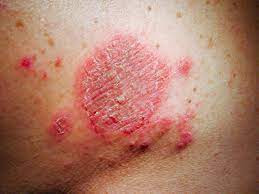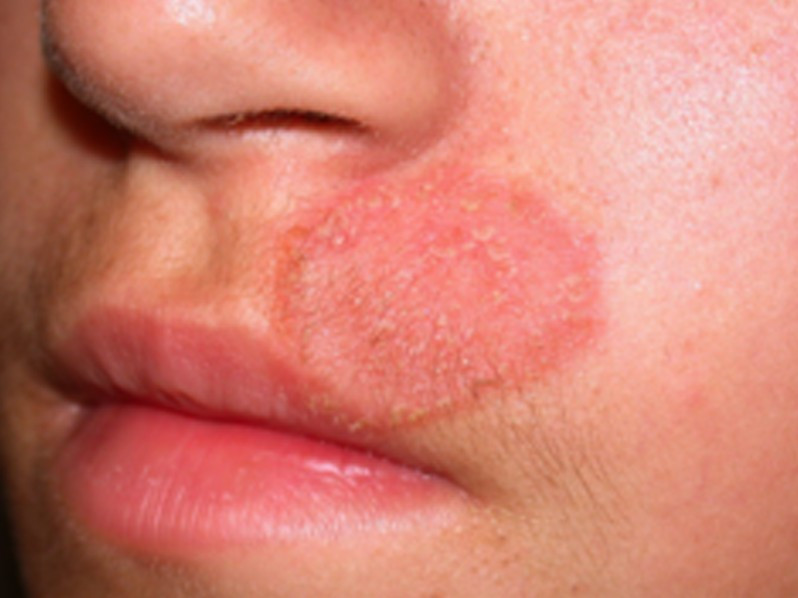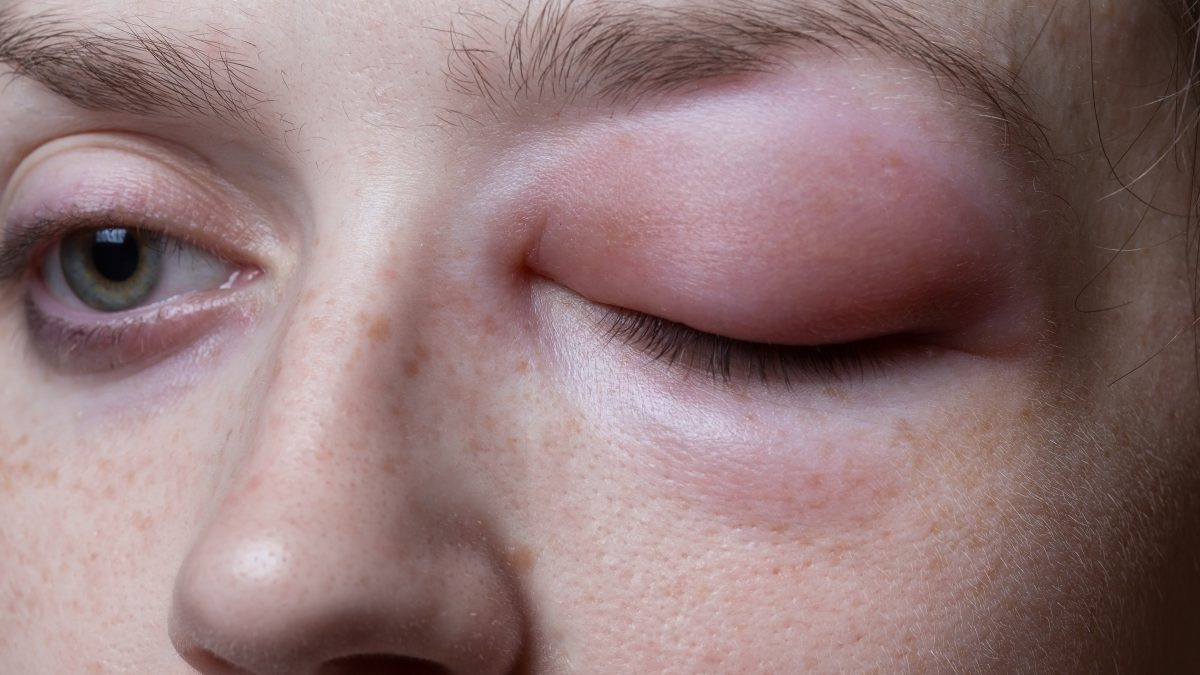Definition
Nummular dermatitis, also known as nummular eczema or discoid eczema, is a disorder characterized by skin inflammation. The inflammation is distinguished by a circular, coin-shaped rash on the skin. Dermatitis refers to the inflammation affecting the skin, whereas "nummular" originates from the Latin word denoting "coin."
Nummular dermatitis is a chronic skin disorder characterized by itchiness, inflammation, and sores on the skin. The cutaneous eruption exhibits a round or oval shape, predominantly on the hands, arms, or lower extremities. The affected areas typically exhibit a red, pink, or brown rash, accompanied by well-defined borders, and may appear scaly or watery.
Nummular dermatitis is not a contagious disease. Untreated nummular dermatitis can persist for extended periods, ranging from weeks to months or even years. Furthermore, it can recur, often presenting in previously affected areas. Nummular dermatitis has the potential to manifest at any age, although it is predominantly observed among middle-aged individuals and the elderly.
Causes
Extremely Dry Skin
The precise etiology of nummular dermatitis remains unknown. There are suspicions about the potential causes of this phenomenon, with one such factor being extremely dry skin. Excessive skin dryness hinders its ability to shield against chemicals that make direct contact with it effectively. Previously harmless things, such as soap, might cause skin irritation.
Other Skin Conditions
Researchers believe that various skin diseases, such as contact dermatitis, which causes skin inflammation due to exposure to specific irritants, can trigger the onset of nummular dermatitis. Some individuals diagnosed with nummular dermatitis may also have a medical history of atopic dermatitis, characterized by skin inflammation due to allergic reactions.
Other Causes
Various things may also trigger the onset of nummular dermatitis, including:
- A prior history of mild skin injuries, such as scratches, insect stings, or burns
- Using certain medicines, for example:
- Interferon and ribavirin, which belong to a class of medications employed in combination for the treatment of hepatitis C
- TNF-alpha blockers, which belong to a class of medications employed for the management of certain arthritis
- Statins, which are medications that decrease cholesterol levels, can lead to skin dryness and the onset of a rash as one of the side effects
- The symptoms of nummular dermatitis might be exacerbated by dry air and chilly climates
- Stress
- Infection on the skin
Risk factor
Several factors can increase the risk of having nummular dermatitis, including:
1. Age and gender
Nummular dermatitis is more prevalent in men than in women. Symptoms typically manifest in men after age 50, whereas in women, they tend to emerge before age 30. The occurrence of nummular dermatitis in children is infrequent.
2. Prior history of other diseases
Pre-existing medical conditions can further elevate a person's risk of nummular dermatitis. A study revealed that individuals with any of the following disorders are at a higher risk of developing nummular dermatitis:
- Atopic dermatitis
- Individuals with a familial predisposition to atopic dermatitis or asthma
- Poor blood circulation in the lower extremities, frequently caused by varicose veins or stasis dermatitis
- Contact dermatitis
- Individuals with extremely dry or sensitive skin
Symptoms
Nummular dermatitis typically affects the arms and legs but can also affect other body parts. Among the symptoms are:
- A coin-shaped rash with well-defined borders; its diameter ranges from 2 to 10 cm
- The color of the rash could be red, pink, or brown, while in dark-skinned individuals it could be gray, purple, or dark brown.
- The rash is raised
- The rash is burning and itching
- The rash could seem to be oozing and then drying up like a crust
- The skin around the affected area turns red and scaly
Diagnosis
Medical Interview
The initial step in diagnosing nummular dermatitis involves the physician having a medical interview with the patient. The physician will inquire about the patient's symptoms, including the onset of the rash, its location, and whether the patient experiences itchiness. The physician will also ask about the patient's medical history, including allergies, concurrent medical conditions, and drug usage.
Physical Examination
Subsequently, the physician will conduct a physical assessment by observing your skin condition, which could be helped by a magnifying glass and flashlight. The diagnosis of this disease typically relies on the findings from medical interviews and physical examinations.
Diagnostic Tests
In certain circumstances, the doctor may recommend some diagnostic tests, such as:
- Skin scraping test
The doctor will gently scrape your skin to take a sample and examine it under a microscope to rule out other possible skin diseases.
- Allergy skin test
The doctor can perform an allergy skin test or patch test using patches applied to the skin if they suspect an allergic reaction is causing the rash. The patch contains many chemicals that may trigger an allergic reaction in some individuals. After a few days, the patches will be removed, and the doctor will check whether there is an allergic reaction on the skin area that has been plastered with the patches.
Management
The objective of the treatment is to cleanse the skin and alleviate the patient's discomfort. Nummular dermatitis could potentially arise and manifest in the future. Multiple treatments exist to alleviate symptoms, including:
- Topical corticosteroid is recommended to mitigate inflammation in the affected skin area.
- Antihistamine drugs can be prescribed by doctors to alleviate pruritus, while certain medications could provide sedative effects that help patients sleep.
- Moisturizing cream or petroleum jelly is recommended to minimize disease recurrence, prevent skin dryness, and minimize the need for steroids.
- Antibiotics may be recommended when patients have sores or infected wounds.
- UV light phototherapy may be a viable treatment option for patients with generalized skin rash.
Complications
Scratching the rash often leads to infection, the most common side effect of nummular dermatitis. Frequent scratching of inflamed skin can lead to the development of sores and expose your skin to bacteria from your hands and nails, which may result in a skin infection. A layer of yellow or golden crusts, red or brown streaks that travel away from the site, or swollen, pus-filled areas can all be signs of infection. Staphylococcus aureus is the most common cause of the infection.
Prevention
The following are some actions you can do to prevent nummular dermatitis from recurring in the future:
- Moisturize your skin daily
- Taking a bath should not be longer than 20 minutes, using warm water is preferable, and avoid hot water
- Choose mile skincare products with hypoallergenic (meaning they don't cause allergic responses) and fragrance-free ingredients
- A humidifier can be used when the air in your room feels dry
- Prevent injuries such as burns, scratches, and scrapes to your skin
- Minimize stress
- Stay out of excessive heat, because perspiration can irritate delicate skin
- Put on loose-fitting and soft clothes that can absorb sweat
When to see a doctor?
Nummular dermatitis symptoms can occasionally be mistaken for other skin conditions. Therefore, if you suspect your rash could be nummular dermatitis, it's best to see a doctor to receive the proper diagnosis and care.
Looking for more information about skin and other hair diseases? Read more articles here!
- dr Hanifa Rahma
Discoid Eczema. (2019). From https://www.nhs.uk/conditions/discoid-eczema/ [ Accessed March 15, 2022 ]
Migala, J. What is Nummular Eczema? Symptoms, Causes, Diagnosis, Treatment, and Prevention. (2021). From https://www.everydayhealth.com/eczema/nummular-eczema.aspx [Accessed March 15, 2022]
Pathak, N. What is Nummular Eczema?. (2021). From https://www.webmd.com/skin-problems-and-treatments/eczema/nummular-eczema-overview [Accessed March 15, 2022 ]
Robinson, CA., et al. Nummular Dermatitis. (2022). From https://www.ncbi.nlm.nih.gov/books/NBK565878/ [Accessed March 15, 2022 ]
Ruenger, TM. Nummular Dermatitis. (2021). From https://www.msdmanuals.com/professional/dermatologic-disorders/dermatitis/nummular-dermatitis [Accessed March 15, 2022 ]
Sherrel, Z. What to Know About Nummular Eczema. (2021). From https://www.medicalnewstoday.com/articles/nummular-eczema [Accessed March 15, 2022 ]
Ludmann, P. Eczema Type: Nummular Eczema Overview. (2021). From https://www.aad.org/public/diseases/eczema/types/nummular-dermatitis [Accessed March 15, 2022 ]
Gabbey, AE. Nummular Eczema. (2021). From https://www.healthline.com/health/skin/nummular-eczema [Accessed March 15, 2022 ]












